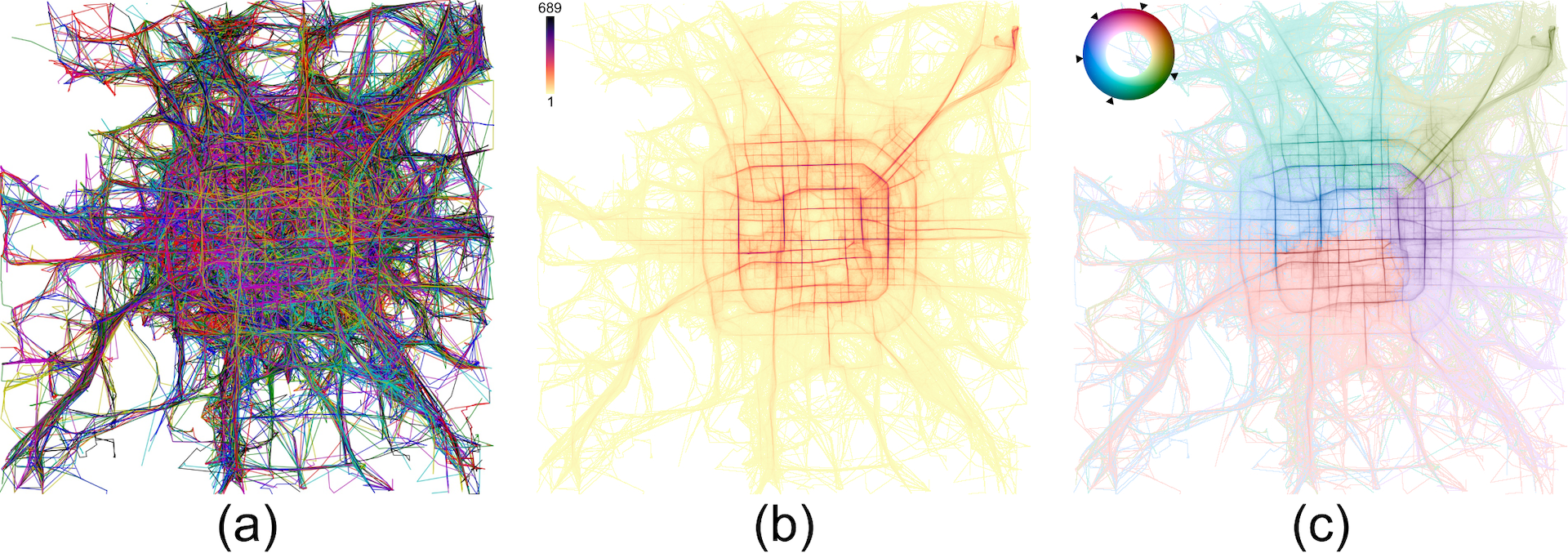Reducing Ambiguity in Line-based Density Plots by Image-space Colorization
Yumeng Xue, Patrick Paetzold, Rebecca Kehlbeck, Bin Chen, Kin Chung Kwan, Yunhai Wang, Oliver Deussen
DOI: 10.1109/TVCG.2023.3327149
Room: 105
2023-10-25T22:48:00ZGMT-0600Change your timezone on the schedule page
2023-10-25T22:48:00Z

Fast forward
Full Video
Keywords
Trajectory data, times series, density-based visualization, clustering, coloring
Abstract
Line-based density plots are used to reduce visual clutter in line charts with a multitude of individual lines. However, these traditional density plots are often perceived ambiguously, which obstructs the user's identification of underlying trends in complex datasets. Thus, we propose a novel image space coloring method for line-based density plots that enhances their interpretability. Our method employs color not only to visually communicate data density but also to highlight similar regions in the plot, allowing users to identify and distinguish trends easily. We achieve this by performing hierarchical clustering based on the lines passing through each region and mapping the identified clusters to the hue circle using circular MDS. Additionally, we propose a heuristic approach to assign each line to the most probable cluster, enabling users to analyze density and individual lines. We motivate our method by conducting a small-scale user study, demonstrating the effectiveness of our method using synthetic and real-world datasets, and providing an interactive online tool for generating colored line-based density plots.